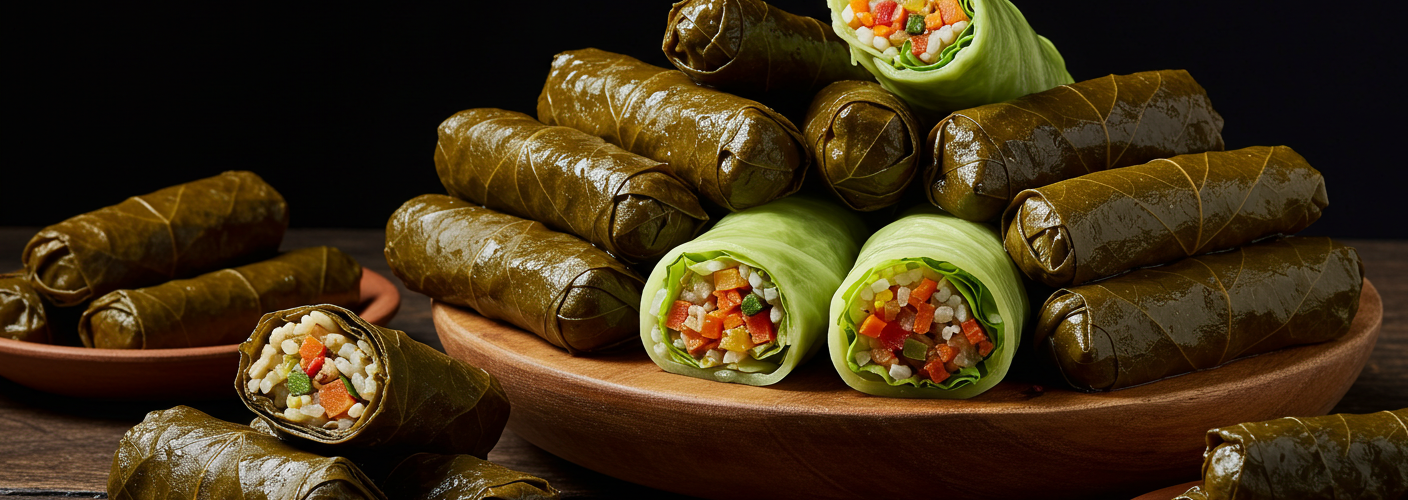Yarpaq Dolmasi is a traditional dish originating from the rich culinary heritage of the Caucasus and Middle Eastern regions. This delightful dish primarily consists of various types of leaves delicately wrapped around a flavorful stuffing, making it not just a meal, but also a cultural experience that spans generations. The name “Yarpaq Dolmasi” translates to “wrapped leaves,” a fitting description of this beautiful and intricate form of gastronomy.
At the heart of Yarpaq Dolmasi lies the choice of leaves. Commonly used leaves include grape leaves, cabbage leaves, and sometimes even dandelion or beet leaves, depending on regional preferences and seasonal availability. Each type of leaf offers a unique flavor and texture, contributing to the overall harmony of the dish. Grape leaves, for example, are tender and blend well with the tangy stuffing, while cabbage leaves might provide a crunchier bite.
The stuffing itself is a blend of ingredients that varies widely among recipes and cultural influences. Typically, it includes rice, grilled minced meat, or a mix of both, seasoned with aromatic spices such as dill, mint, and sometimes even pomegranate or lemon juice for a zesty touch. Nuts and dried fruits, such as pine nuts or raisins, may make their way into the mixture, offering bursts of sweetness that complement the savory elements. Vegetarian versions are also prevalent, where the stuffing primarily focuses on rice, vegetables, and herbs, making it suitable for various dietary preferences.
Making Yarpaq Dolmasi is an artisanal endeavor that requires patience and skill. The process begins with preparing the leaves, which often entails blanching them to preserve their vibrancy and flexibility. Once the leaves are ready, the stuffing is placed at one end of the leaf, and the leaf is carefully rolled, tucking in the sides to create a neat parcel. This step not only showcases culinary technique but also brings a meditative quality to the cooking process, as each roll is executed with care and precision.
The final step is cooking the dolmasi, which can be done in various ways. Some prefer to steam them, allowing the flavors to meld together as they cook, while others opt to simmer them in a rich broth or tomato sauce to deepen the taste. The end result is a dish that elegantly marries the flavors of its ingredients, with the leaves serving as not only a vessel but also a highlighted element of the dish itself.
Yarpaq Dolmasi is often enjoyed as a communal meal, served at family gatherings, special occasions, and celebrations, where sharing food brings people together. It holds a special place in the hearts of many cultures, representing hospitality, tradition, and culinary artistry. The presentation of dolmasi, often stacked in a beautiful arrangement on a platter, enhances the visual appeal and emphasizes the craft involved in their creation.
In conclusion, Yarpaq Dolmasi is more than just a dish; it’s a celebration of flavor, tradition, and connection. Whether you are familiar with this delicacy or experiencing it for the first time, each bite offers a taste of history and the warmth of shared culinary customs. Whether served as an appetizer or a main course, Yarpaq Dolmasi holds a cherished position in the tapestry of global cuisine, inviting everyone to partake in its rich story.




Add comment